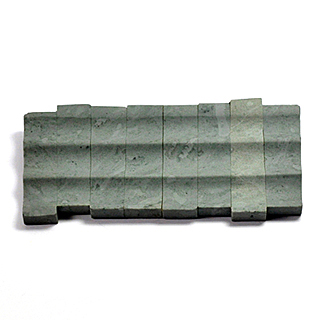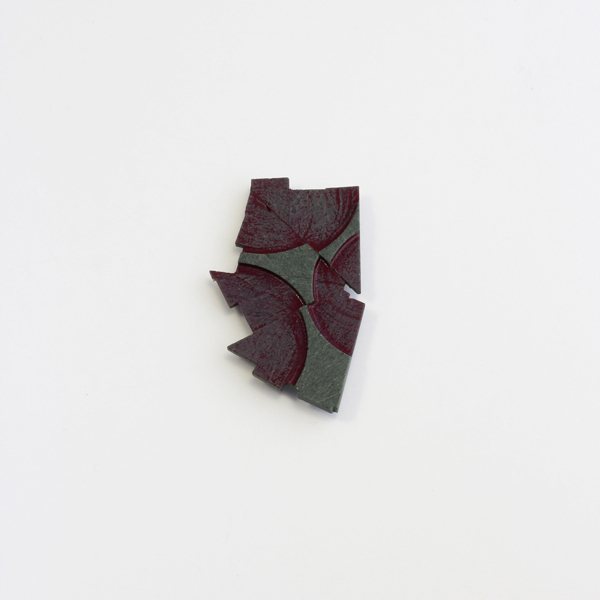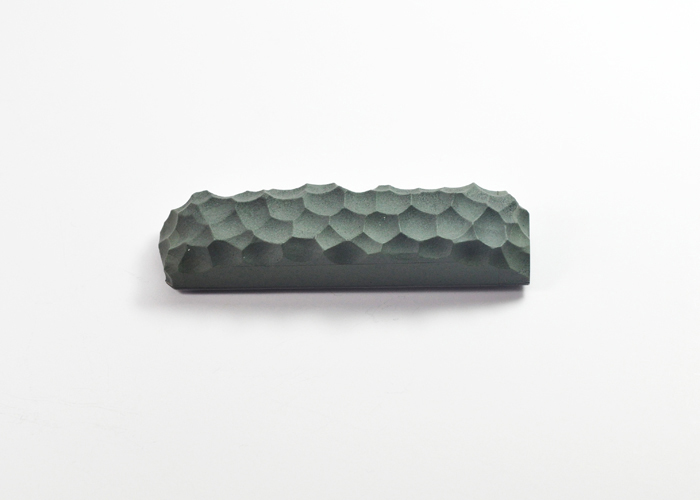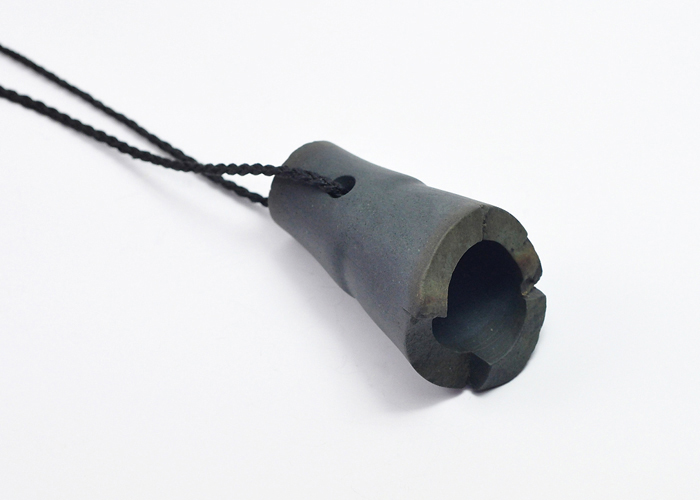
Susan Cummins: You are a carver of stone and a maker of small objects and jewelry, similar to the Japanese craftsman who makes netsuke. What is your connection to that, and how did you get here?
Craig McIntosh: I was introduced to netsuke in the late 90s. I produced and exhibited a small amount of netsuke alongside making jewelry ’til about 2004. If you’re interested in carving, there is so much that can be learned from looking into netsuke—in fact, I don’t think I would make the jewelry I make now, or understand as much about working on a small scale, if I hadn’t explored netsuke.
But it became problematic. The more I became involved with making jewelry, and considering jewelry and its relationship to identity—particularly here in Aotearoa, New Zealand—the less appropriate it felt to be making something from somebody else’s culture. So I stopped, and have been focusing on making jewelry since. I think it has been one of the most rewarding decisions I have ever made.

Susan Cummins: You are a carver of stone and a maker of small objects and jewelry, similar to the Japanese craftsman who makes netsuke. What is your connection to that, and how did you get here?
Craig McIntosh: I was introduced to netsuke in the late 90s. I produced and exhibited a small amount of netsuke alongside making jewelry ’til about 2004. If you’re interested in carving, there is so much that can be learned from looking into netsuke—in fact, I don’t think I would make the jewelry I make now, or understand as much about working on a small scale, if I hadn’t explored netsuke.
But it became problematic. The more I became involved with making jewelry, and considering jewelry and its relationship to identity—particularly here in Aotearoa, New Zealand—the less appropriate it felt to be making something from somebody else’s culture. So I stopped, and have been focusing on making jewelry since. I think it has been one of the most rewarding decisions I have ever made.

Is your carving all accomplished by hand, or do you use technological assistance?
Craig McIntosh: It depends on the material, and what I’m trying to achieve. All the stonework is done using a combination of machines and some handwork with abrasives. Softer materials like wood, bone, and some plastics are partially machine cut, then worked with chisels and other cutting tools that I make myself. I don’t have any kind of prejudice against using technology. It mostly comes down to access to it and affordability.

Craig McIntosh: The MFA project is about making jewelry. I’ve been concentrating on using and developing a methodology around fabrication with stone for the past couple of years, rather than being locked in and relying on a completely reductive process, which most makers use when they work stone. I’ve been interested in chopping stone into small components, then using engineering adhesives to assemble them. These forms then get carved back into or re-cut and re-assembled. I think developing this way of working has been incredibly beneficial to my practice; it allows a lot more freedom to improvise with process and material. And it lets me relatively quickly build up form and idea. It has changed the way I consider making jewelry and using material.
What ideas are you working with for this show at The National?
Craig McIntosh: The work for the show in The National is a component of the wider MFA project. The focus for this body of work was surface. The marks created by the diamond burrs during the cutting of the stone haven’t been sanded or polished out. In some of the pieces, I’ve emphasized the marks by rubbing paint into them. On others, once the surface has been ground, the form has then been sandblasted. The sandblasting actually retains the machine mark; it hollows it out. Sandblasting also reacts with the physical characteristics of the stone. Hard and soft areas in the material are exaggerated, giving some interesting results. It opens up a whole other way of seeing stone, and looking at what is possible when using the material in a jewelry context.
This kind of approach is normally considered bad practice here in Aotearoa. The more established way of working is to sand and remove the burr or machine mark, then apply a high glossy polish or what I would call a refined matte surface, where everything is even, smooth, no abrasive mark is visible even through a magnifying eye piece. It’s overworked. This isn’t intended as a criticism about working this way. It has its place. It’s more that I personally began to find this way of working restrictive, and it closed off too many possibilities.

In 2010 you were exploring discarded objects as mementos. Can you describe those ideas? Are you finished with those concepts now?
Craig McIntosh: Sometimes I think we take for granted, or don’t consider, the significance of things that are a part of our everyday lives … I don’t think I will ever be finished with those concepts.

Craig McIntosh: Carving is everywhere here. There’s an incredibly rich history of carving being used to produce adornment in Aotearoa, and it’s impossible for me to think about New Zealand jewelry without carving being here in some way.
What qualities distinguish New Zealand jewelry?
Craig McIntosh: For a small place, Aotearoa has an incredibly diverse range of jewelry practices. I actually wouldn’t like to say “This is what.” To anybody interested in understanding what is happening with jewelry in Aotearoa, I would suggest looking at the Wunderrūma exhibition (curated by Karl Fritsch and Warwick Freeman) or getting their hands on a copy of the catalog. It shows an excellent cross section of what’s happening here.
Who do you look to for inspiration?
Craig McIntosh: Tom Curren, the surfer and musician.
What have seen, heard, or read recently that you would like to recommend?
Craig McIntosh: I read Place and Adornment by Damian Skinner and Kevin Murray a few weeks ago. It’s worth reading!!
Thank you.




